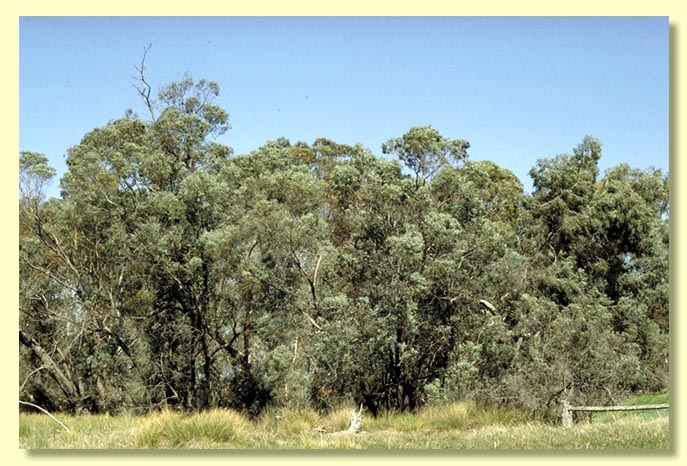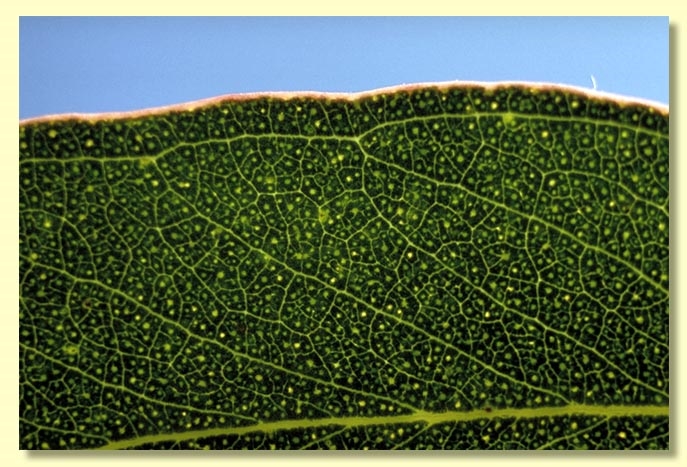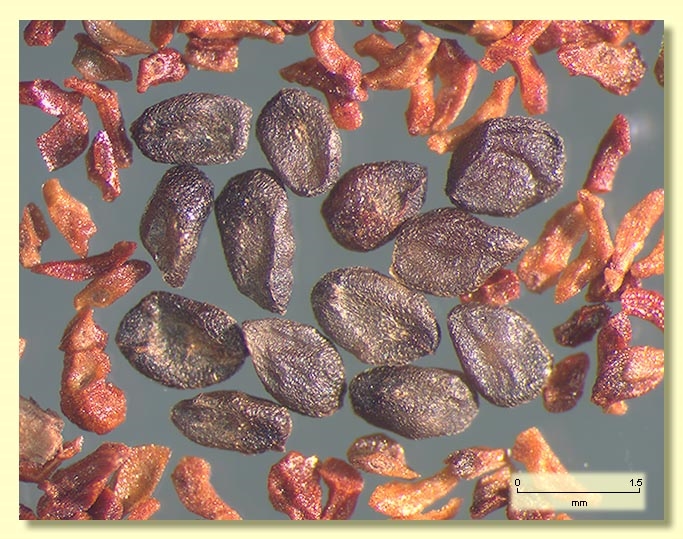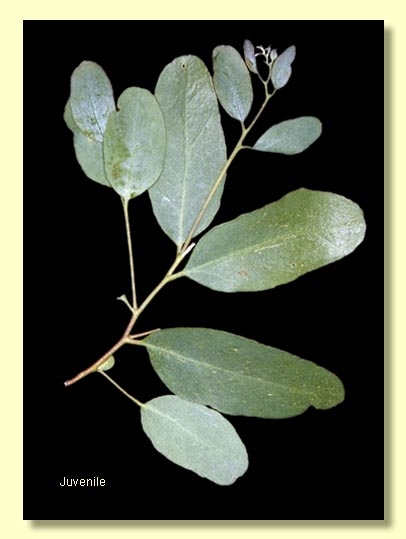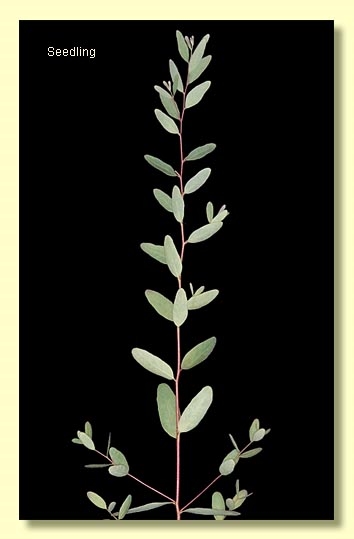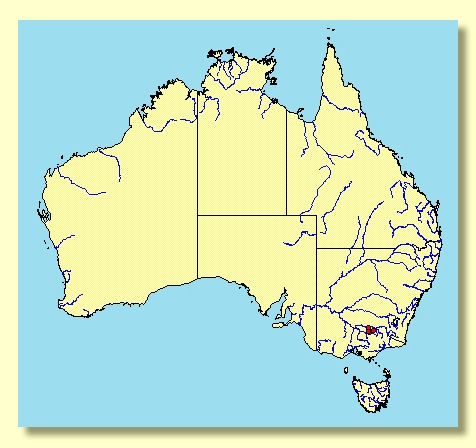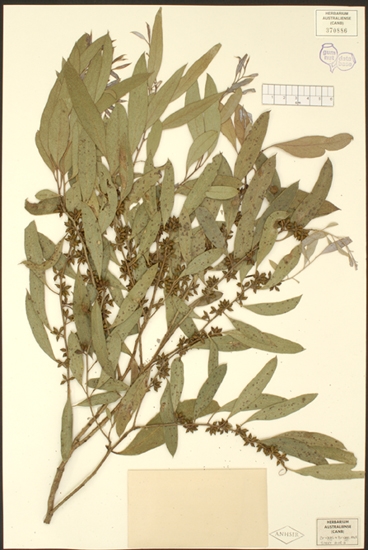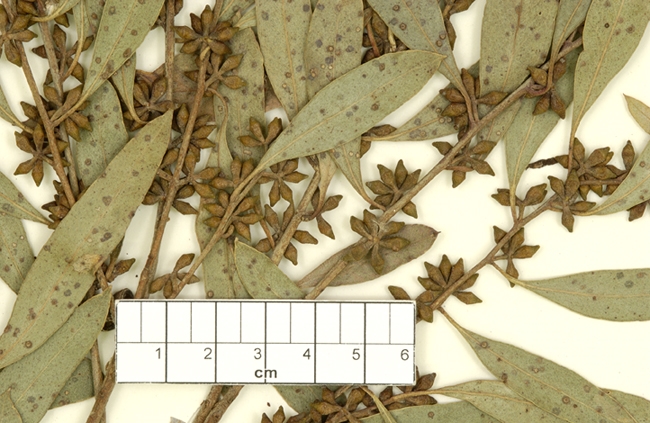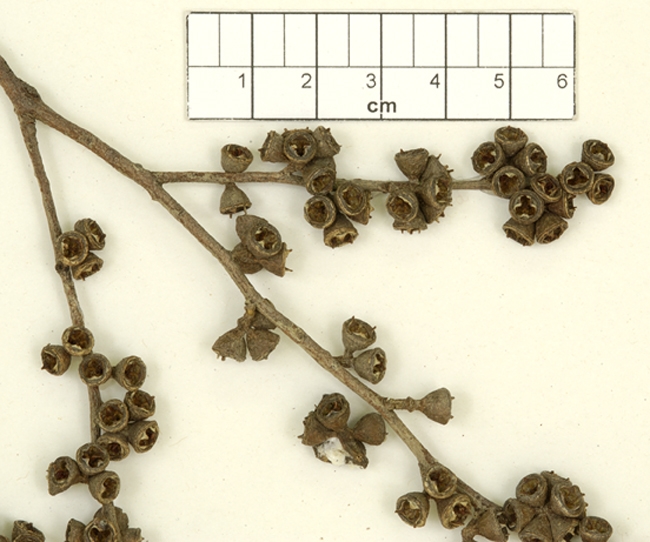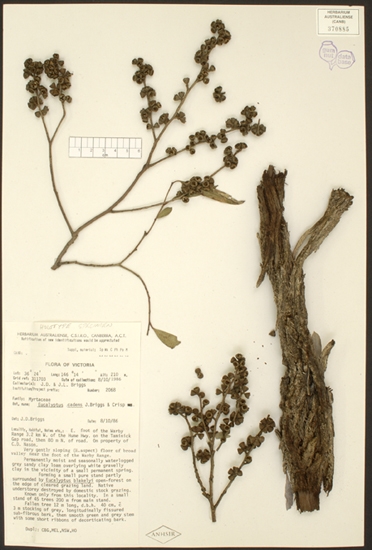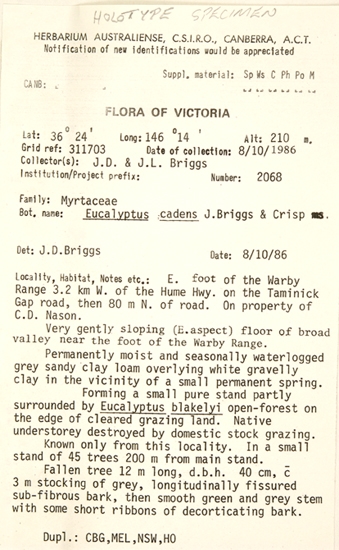Euclid - Online edition
Eucalyptus cadens
Eucalyptus | Symphyomyrtus | Maidenaria | Triangulares | Foveolatae
Bark rough and compacted, dark grey, grey-brown or black, on 1–6 m of trunk, or with some loose basal slabs, smooth above, mostly green-grey often with a few ribbons of decorticated bark in the upper branches, branchlets sometimes glaucous.
Juvenile growth (coppice or field seedlings to 50 cm): stem rounded in cross-section, glaucous or non-glaucous, warty or smooth; juvenile leaves initially subsessile, opposite, soon becoming alternate, petiolate, elliptical to oblong, 1.7–5.7 cm long, 0.5–3.5 cm wide, margin crenulate or entire, grey-green or glaucous. New growing tips in crown glaucous.
Adult leaves alternate, petiole 0.5–1.7 cm long; blade narrow elliptical to lanceolate to slightly falcate, 5–13 cm long, 0.9–2 cm wide, base tapering to petiole, concolorous, slightly glossy or dull, green to blue-green, side-veins at an acute or wider angle to midrib, moderately to densely reticulate, intramarginal vein parallel to and just within margin or well removed from it, oil glands island and intersectional.
Inflorescence axillary unbranched, peduncles 0.2–0.6 cm long, buds 7 per umbel, pedicels 0.1–0.2 cm long. Mature buds broadly fusiform to diamond-shaped or ovoid (0.45–0.7 cm long, 0.25–0.4 cm wide), green to yellow, scar present, operculum slightly beaked to conical (0.25–0.4 cm long), stamens inflexed or irregularly flexed, anthers cuboid or cuneate, versatile, dorsifixed, dehiscing by longitudinal slits (non-confluent), style long, stigma blunt, locules 3 or 4, the placentae each with 4 vertical ovule rows. Flowers white.
Fruit sessile to shortly pedicellate (pedicels 0–0.2 cm long), broadly obconical, 0.3–0.4 cm long, 0.4–0.6 cm wide, disc raised-convex, or annular, or disc level, valves 3 or 4, exserted.
Seeds dullish black, brown or grey, 0.8–1.7 mm long, ovoid or flattened-ovoid, usually lacunose, dorsal surface shallowly pitted or smooth, hilum ventral.
Cultivated seedlings (measured at ca node 10): cotyledons bilobed; stems rounded in cross-section, usually slightly warty, rarely glaucous; leaves shortly petiolate, opposite for ca 6 nodes then alternate, elliptical to oblong, 1–5.3 cm long, 0.3–2.2 cm wide, base rounded to tapering, apex rounded, green to slightly glaucous.
Flowering has been recorded in April.
A small to medium-sized woodland tree of restricted distribution in north-central Victoria from east of the Warby Range towards Beechworth, always on sites of poor drainage. It usually has dull bluish green adult leaves that distinguish it from other swamp gums, which always have glossy, bright green adult leaves. The fusiform buds and obconical fruit resemble those of E. ovata. Like E. strzeleckii, it has glaucous new growth tips on the outside of the crown, this waxiness being quickly lost as leaves expand.
Eucalyptus cadens belongs in Eucalyptus subgenus Symphyomyrtus section Maidenaria because the cotyledons are bilobed, inflorescences axillary, anthers versatile and seeds flattened-ovoid. Within this large section, E. cadens is one of ten species forming subsection Triangulares series Foveolatae. The species are E. barberi and E. rodwayi (both Tasmanian endemics), E. brookeriana, E. ovata (both occurring in Tasmania and on the mainland) and E. aggregata, E. cadens, E. macarthurii, E. strzeleckii and E. yarraensis (found only on the mainland).
E. cadens is listed as "Vulnerable" under the Australian Government Environment Protection and Biodiversity Conservation Act 1999 (EPBC Act). Further information may be found at this web address:
http://www.environment.gov.au/cgi-bin/sprat/public/sprat.pl

